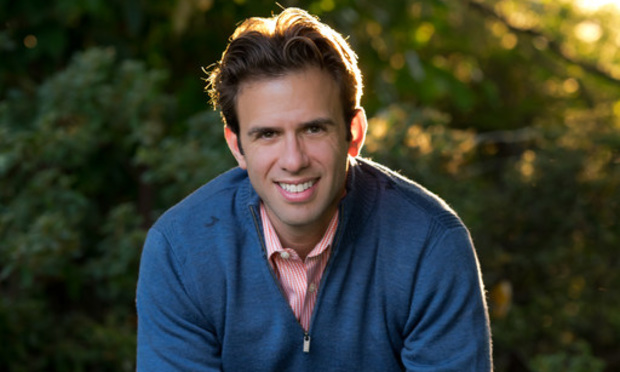Public Statements About Ongoing Litigation Can Lead to Defamation Claims
Speaking publicly about ongoing litigation can help attorneys and their clients win public support for their side of a disput
November 02, 2017 at 02:04 PM
7 minute read

Speaking publicly about ongoing litigation can help attorneys and their clients win public support for their side of a dispute. A recent decision by the U.S. Court of Appeals for the Second Circuit, however, reminds litigants that in attempting to win over the public in ongoing litigation, attorneys and clients also expose themselves to potential defamation claims.
In Friedman v. Bloomberg, 871 F.3d 185 (2d Cir. 2017), the Second Circuit held that a public statement about a lawsuit could give rise to its own separate lawsuit for defamation. At issue in Friedman was a statement in a Bloomberg article about a lawsuit Dan Friedman filed against his former employer, Netherlands-based Palladyne International Asset Management. In 2014, Friedman sued Palladyne in Connecticut federal court alleging that he had been fired in 2012 for voicing concerns that Palladyne was not engaging in legitimate investment activities. Friedman had claimed the company was a “kickback and money laundering operation” for the regime of former Libyan dictator Muammar al-Gaddafi.
Two days after Friedman filed his lawsuit, Bloomberg published an online article about the lawsuit titled “Palladyne Accused in Suit of Laundering Money for Qaddafi.” The article contained statements from Palladyne and from Friedman's attorney. In its statement, Palladyne said that “these entirely untrue and ludicrous allegations [in Friedman's lawsuit] have been made by a former employee who has repeatedly tried to extort money from the company … He worked with us for just two months before being dismissed for gross misconduct.” After the article was published, Friedman filed a second lawsuit against Palladyne, its U.K.-based public relations firm (which allegedly prepared the statement), and Bloomberg, alleging that the quoted statement was defamatory. After the defendants moved to dismiss the claims, the district court dismissed the claims against Bloomberg, holding that the statement at issue was a protected expression of opinion. The court also dismissed the claims against Palladyne and its PR firm, but on jurisdictional grounds.
On appeal, the Second Circuit affirmed the district court's dismissal of claims against Palladyne and its PR firm, but reversed the district court's dismissal of the claims against Bloomberg. The appellate court held that Palladyne's statement that Friedman “had repeatedly tried to extort money from the company” could, as a matter of law, give rise to a defamation claim. The court held that a reasonable reader could interpret Palladyne's use of “extort” to be more than simply “rhetorical hyperbole,” as the district court had held. “Rhetorical hyperbole” is a category of speech that does not give rise to a defamation claim because it cannot reasonably be interpreted as stating actual facts. The Second Circuit ruled that Palladyne's statement could be read as something more than a hyperbolic characterization that the lawsuit was an attempt to extort money. Instead, a jury could reasonably read the statement to mean that Friedman actually committed the crime of extortion. Thus, this latter reading could lead to a defamation claim because when it is read in this light, the statement contains facts that can be proven false. The court noted that because Palladyne said in its statement that Friedman was “dismissed for gross misconduct,” a reasonable reader could have believed that such misconduct included the multiple attempts to “extort” money.
The Second Circuit further held that even if a reasonable reader could interpret the use of “extort” here as hyperbole concerning Friedman's actions and not a factual statement that he committed a specific crime, in this context the statement could still lead to a defamation claim. Palladyne's statement refers to previous attempts to “extort” money, but Palladyne did not explain what it meant by “extort.” Generally speaking, a statement of opinion can give rise to a defamation claim when the statement implies that the speaker knows certain unflattering facts about the statement's subject that the audience does not know and that support the speaker's opinion. In this instance, Palladyne's statement can be read to imply that there are undisclosed facts about Friedman that would be detrimental to his character. In light of these holdings, the Second Circuit remanded the case to the district court so that a jury could determine whether readers understood the statement at issue here to mean that Friedman engaged in criminal conduct, and if the statement defamed Friedman.
So what should attorneys and clients do differently now that Friedman is the law of the land in the Second Circuit—and surely persuasive authority for other circuits? Absolutely nothing. There is nothing earth shattering about the proposition that there could be legal consequences for parties who make defamatory public statements about ongoing litigation. Attorneys who are familiar with engaging the court of public opinion in connection with client matters know this risk. Friedman is the equivalent of a public service announcement from the Second Circuit reminding attorneys and litigants of this risk.
Recognition of this risk, however, should not be an excuse for attorneys to avoid speaking publicly on behalf of their clients when circumstances warrant. For every court filing, an attorney is technically at risk for being sanctioned. That doesn't stop attorneys from making those filings. Every legal complaint is technically at risk of being dismissed before trial. That doesn't stop attorneys from filing complaints. Instead, attorneys do all that they can to ensure that their court filings are not sanctionable and that their complaints are dismissal-proof.
So, too, should attorneys do all that they can to ensure their public statements about ongoing litigation are not defamatory. Attorneys should review, and be familiar with, the elements of a defamation claim in the jurisdictions where they practice. While there is no substitute for that legal research, generally speaking, in light of Freidman, attorneys could ask themselves the following questions to help determine if a planned public statement about ongoing litigation could give rise to a defamation claim:
- Does the public statement have to address the actions of an adversary? Can the attorney make his or her point just as effectively by instead focusing on the attorney's own client or some general societal wrong?
- If the statement concerns an adversary, is it the kind of statement a reasonable reader would consider to be a factual statement?
- If so, is it truthful?
- If the statement is intended to be hyperbole, is it exaggerated or over-the-top hyperbole that no reasonable reader would interpret it as a factual statement? For example, “Instead, Mr. Turner managed the difficult feat of having his head in the clouds while it was simultaneously buried in the sand.”
- If the statement is intended as an opinion, does the statement also include the facts upon which the opinion is based? For example, “Between the allegations in this complaint and his public history of misconduct at other companies, one would think that Mr. Hooch is a leading candidate for the 'Worst Boss of the Year' award.”
In light of Friedman, there will surely be attorneys for whom the risk of defamation stemming from public statements about ongoing litigation outweighs the rewards of making such statements in the form of the favorable resolution of that litigation and reduced reputational harm to the client. That's unfortunate, and will likely do more harm than good to a client's legal, reputational, and business interests. The formula for developing effective public statements about ongoing litigation when engaging the court of public opinion has always been “Strategy + Persuasion + Compliance with ethical rules + Avoiding defamation.” Friedman does not change the formula. It simply reminds attorneys to check their math.
Wayne Pollock is the founder and managing attorney of Copo Strategies in Philadelphia, a boutique law firm that helps other attorneys and clients make those clients' cases in the court of public opinion. He is also a director at Baretz+Brunelle, a national communications firm. Contact him at 215-454-2180, or @waynepollock_cs on Twitter.
This content has been archived. It is available through our partners, LexisNexis® and Bloomberg Law.
To view this content, please continue to their sites.
Not a Lexis Subscriber?
Subscribe Now
Not a Bloomberg Law Subscriber?
Subscribe Now
NOT FOR REPRINT
© 2025 ALM Global, LLC, All Rights Reserved. Request academic re-use from www.copyright.com. All other uses, submit a request to [email protected]. For more information visit Asset & Logo Licensing.
You Might Like
View All
Pa. High Court to Decide Whether Flight in a High Crime Area Can Result in an Investigative Stop
6 minute read
Lackawanna County Lawyer Fails to Shake Legal Mal Claims Over Sex With Client
3 minute read
Pa. Superior Court Rules Pizza Chain Liable for Franchisee Driver's Crash
4 minute readTrending Stories
- 1RIP DOJ FCPA Corporate Prosecutions
- 2Federal Trade Commission’s Updates to the Health Breach Notification Rule Now In Effect
- 3I’m A Lawyer, What Can I Sell?
- 4Internal GC Hires Rebounded in '24, but Companies Still Drawn to Outside Candidates
- 5How I Made Office Managing Partner: 'Don’t Be an Opportunity Killer,' Says Thomas Haskins of Barnes & Thornburg
Who Got The Work
J. Brugh Lower of Gibbons has entered an appearance for industrial equipment supplier Devco Corporation in a pending trademark infringement lawsuit. The suit, accusing the defendant of selling knock-off Graco products, was filed Dec. 18 in New Jersey District Court by Rivkin Radler on behalf of Graco Inc. and Graco Minnesota. The case, assigned to U.S. District Judge Zahid N. Quraishi, is 3:24-cv-11294, Graco Inc. et al v. Devco Corporation.
Who Got The Work
Rebecca Maller-Stein and Kent A. Yalowitz of Arnold & Porter Kaye Scholer have entered their appearances for Hanaco Venture Capital and its executives, Lior Prosor and David Frankel, in a pending securities lawsuit. The action, filed on Dec. 24 in New York Southern District Court by Zell, Aron & Co. on behalf of Goldeneye Advisors, accuses the defendants of negligently and fraudulently managing the plaintiff's $1 million investment. The case, assigned to U.S. District Judge Vernon S. Broderick, is 1:24-cv-09918, Goldeneye Advisors, LLC v. Hanaco Venture Capital, Ltd. et al.
Who Got The Work
Attorneys from A&O Shearman has stepped in as defense counsel for Toronto-Dominion Bank and other defendants in a pending securities class action. The suit, filed Dec. 11 in New York Southern District Court by Bleichmar Fonti & Auld, accuses the defendants of concealing the bank's 'pervasive' deficiencies in regards to its compliance with the Bank Secrecy Act and the quality of its anti-money laundering controls. The case, assigned to U.S. District Judge Arun Subramanian, is 1:24-cv-09445, Gonzalez v. The Toronto-Dominion Bank et al.
Who Got The Work
Crown Castle International, a Pennsylvania company providing shared communications infrastructure, has turned to Luke D. Wolf of Gordon Rees Scully Mansukhani to fend off a pending breach-of-contract lawsuit. The court action, filed Nov. 25 in Michigan Eastern District Court by Hooper Hathaway PC on behalf of The Town Residences LLC, accuses Crown Castle of failing to transfer approximately $30,000 in utility payments from T-Mobile in breach of a roof-top lease and assignment agreement. The case, assigned to U.S. District Judge Susan K. Declercq, is 2:24-cv-13131, The Town Residences LLC v. T-Mobile US, Inc. et al.
Who Got The Work
Wilfred P. Coronato and Daniel M. Schwartz of McCarter & English have stepped in as defense counsel to Electrolux Home Products Inc. in a pending product liability lawsuit. The court action, filed Nov. 26 in New York Eastern District Court by Poulos Lopiccolo PC and Nagel Rice LLP on behalf of David Stern, alleges that the defendant's refrigerators’ drawers and shelving repeatedly break and fall apart within months after purchase. The case, assigned to U.S. District Judge Joan M. Azrack, is 2:24-cv-08204, Stern v. Electrolux Home Products, Inc.
Featured Firms
Law Offices of Gary Martin Hays & Associates, P.C.
(470) 294-1674
Law Offices of Mark E. Salomone
(857) 444-6468
Smith & Hassler
(713) 739-1250






